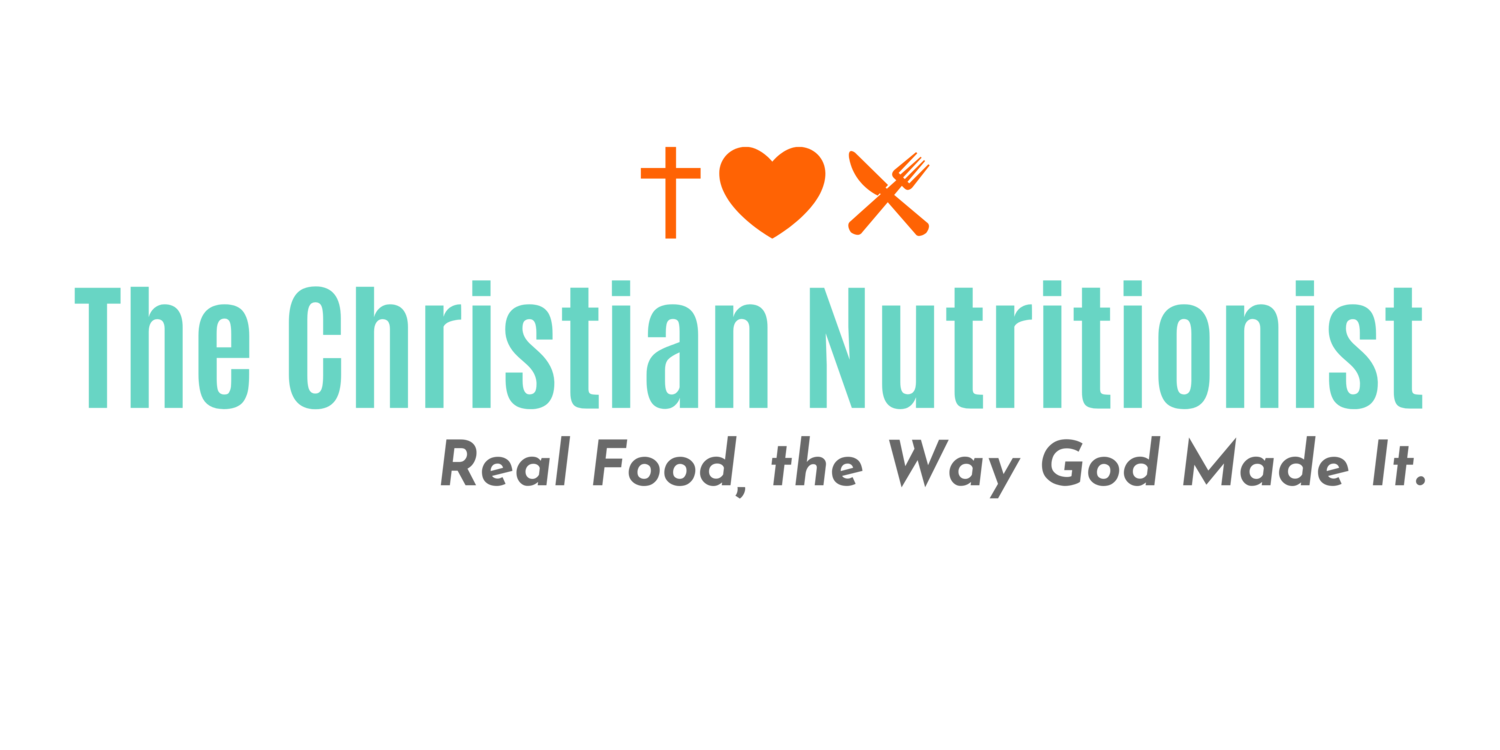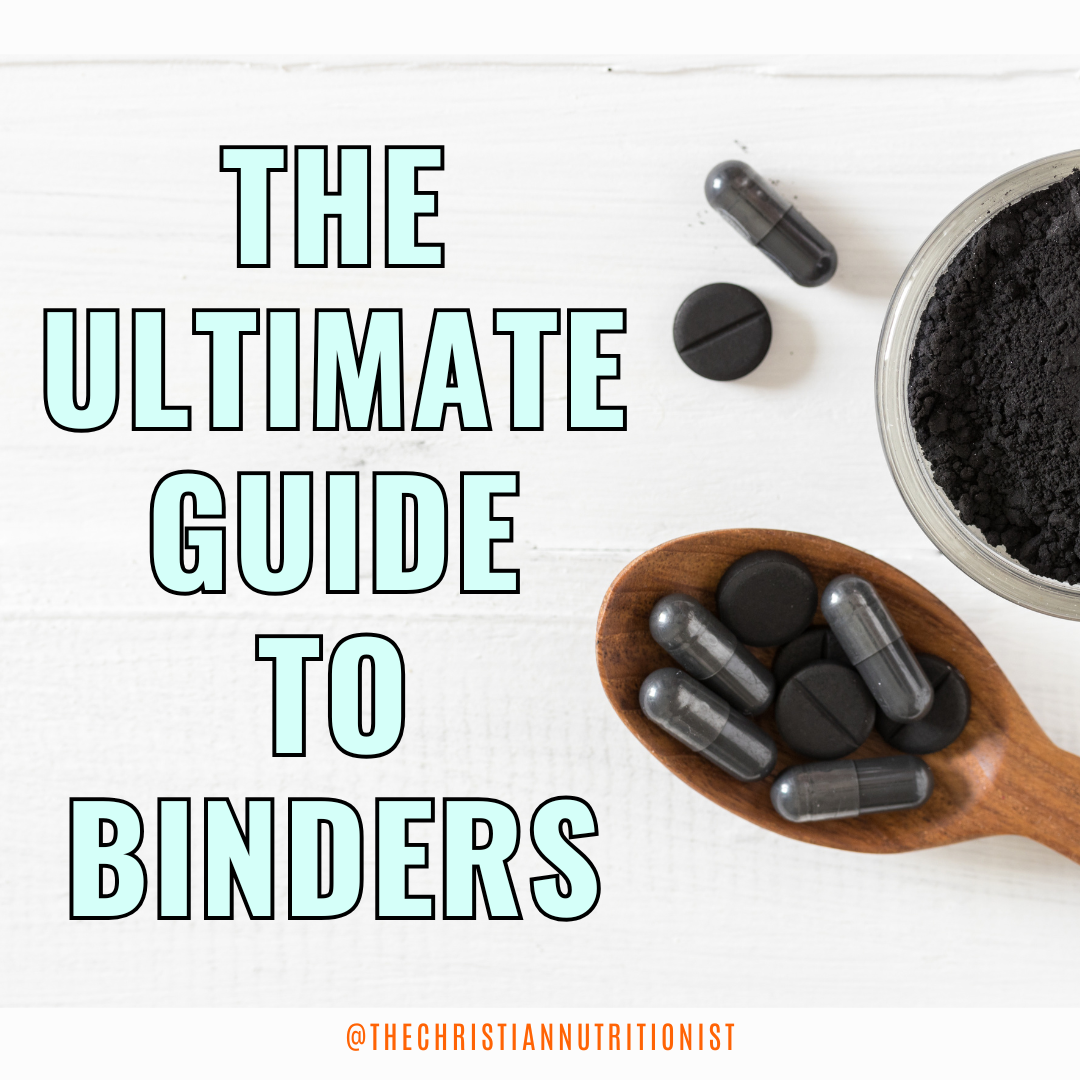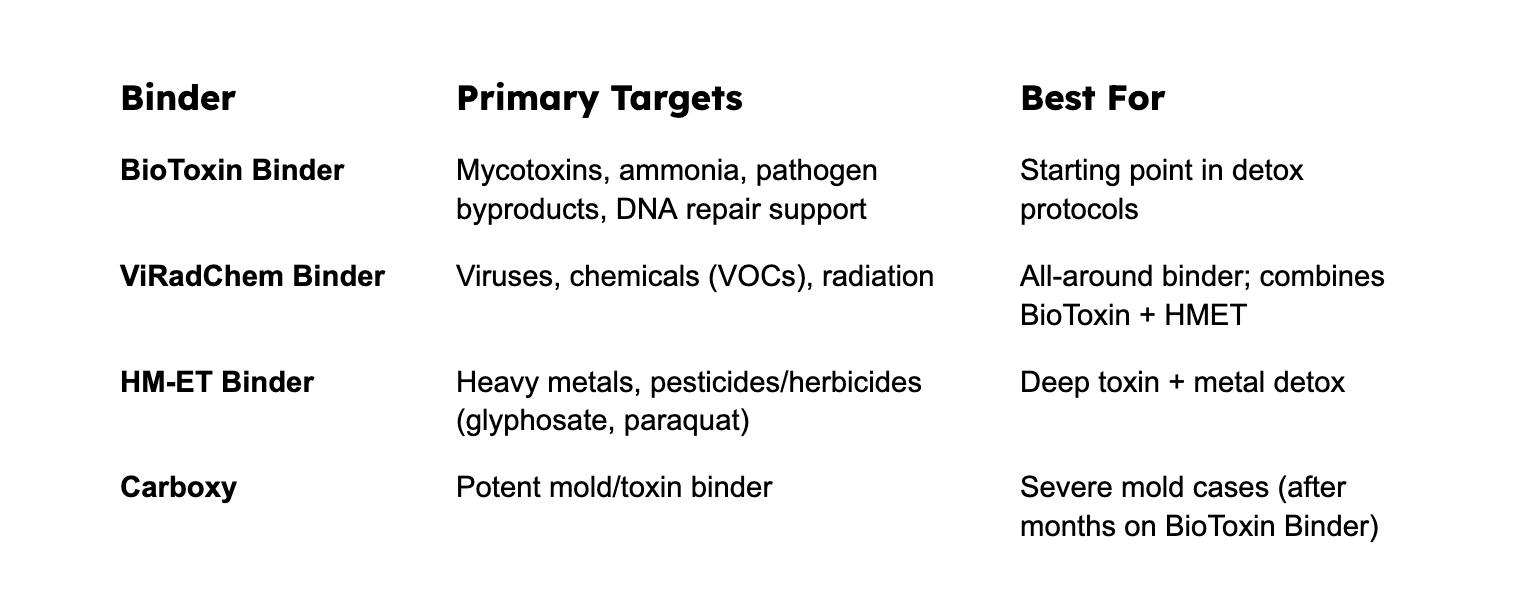The Ultimate Guide to Binders
If you feel like you’re hearing about binders more than you ever have - you’re right.
These modern times come with a high toxin load that necessitates proactively addressing toxins.
Whether part of a detox protocol or a daily toxin-tackling routine, binders play a key role in moving these harmful substances out of the body.
Some binders are more effective than others and some can be used long-term while others can’t. This guide breaks it all down for you and shares my favorite picks.
Important Note: The information provided here is for educational and informational purposes only and is not intended as medical advice. It is not a substitute for professional medical diagnosis, treatment, or care. Always consult your physician or another qualified healthcare provider with any questions you may have regarding a medical condition. Never disregard professional medical advice or delay in seeking it because of something you have read here.
Why Binders Matter
Binders are substances that grab onto toxins and carry them out of the body.
They’ve been used for centuries - first for poisoning and chemical exposure, and now in functional medicine for a much wider range of toxins like:
Mycotoxins (mold byproducts)
Heavy metals
Pesticides & herbicides
Radioactive elements
Volatile organic compounds (VOCs)
Harmful microbial byproducts
You’re exposed daily - through food, air, water, and even your home environment - despite your best avoidance efforts.
That’s why binders can be used for:
Daily detox maintenance
Targeted healing protocols for symptoms of detox dysfunction such as stubborn weight gain, chronic fatigue, seasonal allergies, skin issues, hormone imbalances, mood swings, poor sweat response, and digestive problems.
Mineral balancing programs - when minerals are rebalanced (e.g., via HTMA protocols), detox pathways open and create more “trash” that needs to be bound and removed.
Binders are key in detox protocols because they prevent toxins from recirculating in your body, where they can damage tissues, disrupt hormones, and strain the immune system.
The Science of Binding
Carbon Length + Electrical Charge = Binder Efficacy
Binders work based on:
Carbon Chain Length
Long chains – stay in the gut (good for GI-only detox)
Short & medium chains – travel systemically to tissues, cells, and even across the blood-brain barrier
Electrical Charge & pH
Lower pH = more acidic = higher potential energy and stronger binding (especially for metals & stubborn toxins)
Higher pH = less energy, weaker binding
Charge Specificity
Different toxins have different charges. Certain binders are naturally “attracted” to specific toxins based on charge
Most traditional binders have long chains and higher pH - limiting them to gut-only detox and lowering their binding strength.
Specialized binders (like humic & fulvic acids) have shorter chains, lower pH, and can work throughout the body. This is key because we have toxins everywhere, not just the gut!
Binder Categories & Limitations
Conventional Binders
Examples: Activated charcoal, bentonite clay, chlorella, citrus pectin, diatomaceous earth, bamboo.
Best use: GI-based detox (gut protocol, acute ingestion)
Drawbacks:
Non-selective (binds good + bad nutrients)
Nutrient depletion risk if used >3–6 months
Must be taken 60–90 min away from food/supplements/meds
No nutritional support for repair
Bottom Line: These are great for tackling gut-specific issues but not great for addressing your entire body.
Pharmaceutical Binders
Examples: Cholestyramine (CSM), Welchol
Best use: Mold toxicity (as per Dr. Shoemaker’s CIRS protocol)
Drawbacks:
Sequester bile acids → gallbladder stress, fat malabsorption, vitamin deficiencies
Must be taken 90-120 min away from food/supplements/meds
Non-selective binding
Zeolite
Best use: Heavy metals, mineral balancing, ammonia, mycotoxins
Note: Quality matters - best when blended with short, medium, and long chain carbons for systemic + gut action
Drawbacks: Lower nutritional value than humic/fulvic acids unless in CellCore’s carbon matrix (which prevents nutrient binding)
Shilajit
Best use: Nutrient-rich binder; supports hormone balance (esp. low testosterone/DHEA in men)
Contents: Minerals, humic acid, fulvic acid, amino acids, antioxidants
Tip: Take on empty stomach, AM or midday for energy boost
Humic & Fulvic Acids
Humic: Large molecules (10,000–100,000 MW) → gut action
Fulvic: Small molecules (1,000–10,000 MW) → cross gut wall, travel systemically, cross blood-brain barrier
Best use: Systemic detox + nutritional restoration
Unique:
Can be taken with food/supplements (but separate from meds)
Selective binding (don’t grab essential nutrients)
Highest nutritional value of all binders
Favorite Binder Picks
Good: GI Detox+, UltraBinder, Takesumi Supreme
(GI Detox and UltraBinder can be found on Fullscript)
Better: BEAM Minerals
Mitolife Panacea (discount code TCN), Clrly ShilajitBest: Cellcore (You can create a Cellcore account HERE )
Cellcore binders are hands-down my favorite. They’re high quality humic/fulvic based (not all humics and fulvics are created equally). They are highly charged. They’re nutrient-rich.. They work systemically. They’re selective - meaning they don’t bind good stuff along with the bad. That means you can take them with or without food and other supplements (but all binders should be taken away from medications). And because they don’t deplete minerals, it also means you can take them long-term.
Why Choose Carbon-Based Humic/Fulvic Binders Over Old-School
Using Binders In A Detox Protocol
Cellcore’s Foundational Protocol - a four-step, four month detox - uses three primary binders to address a broad range of harmful toxins: Biotoxin binder, ViRadChem binder (stands for viruses, radiation and chemicals) and HMET binder (stands for heavy metals and environmental toxins).
Each builds upon the other and the Foundational Protocol works systemically to remove toxins, increase cellular energy/function and restore a healthy microbiome terrain.
Cellcore also has a fourth binder called Carboxy which can be used in special cases.
If you’ve never done a full body detox protocol, the Cellcore Foundational Protocol is a fantastic choice. Pretty much everyone can benefit from doing a really deep cleaning and total body reset.
Learn more about my Cellcore Detox Group here
Where CellCore Stands Apart
Most humic/fulvic products keep the molecules attached — so fulvic acids can’t leave the gut.
CellCore separates them, allowing:
Humics → gut binding
Fulvics → systemic binding (even brain & tissues)
CellCore Carbon Technology = Unspent carbon molecules with:
Short, medium, long chains → gut + systemic reach
Lower pH → higher binding energy
Selective binding → safe long-term use
Nutrient delivery → repairs toxin damage while removing toxins
The 4 CellCore Binders
All contain humic + fulvic acids (and some zeolite), work on all toxins generally, but each has a focus:
Favorite All Around Binder: ViRadChem
If I had to choose one for ongoing maintenance it’s this one because ViRadChem is a blend of all of their binders.
Fun Fact: HM-ET Is NickNamed “The BabyMaking Binder”
Binding glyphosate has been pivotal for many during their fertility journey.
Helpful Tip:
Take a binder when you go out to eat to help blunt the extra load of toxins from seed oils and pesticides.
Key Takeaways
You’ve probably learned more about binders than you ever wanted to know! But hopefully this guide has been helpful so that you can choose a binder that best fits your needs.
Not all binders are equal - different toxins require different electrical charges.
Most traditional binders are gut-only, non-selective, and nutrient-depleting.
Humic/fulvic carbon technology allows for systemic, selective, nutrient-rich detox.
I am partial to the humic/fulvic based binders for their extensive capabilities and I particularly love the way Cellcore’s Foundational Protocol utilizes their specially formulated binders to address toxins from head to toe.
If you’d like to learn more about Cellcore, check out this podcast episode.
And although I “officially” kick off detox groups every September and January, you can go through my guided detox at any time.







